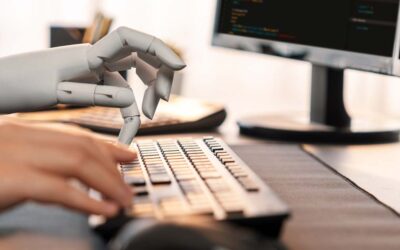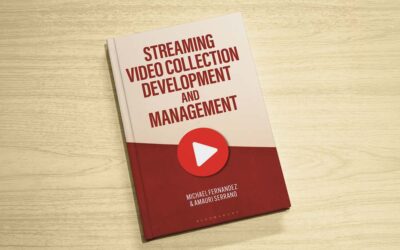Interview with the Author: Nicole Fox; Digital Visual Literacy
Lauren Hays
Nicole Fox recently wrote Digital Visual Literacy, published earlier this year by ABC-CLIO. My interview with her is below.
Lauren: Please introduce yourself to our readers.
Nicole: Hello! My name is Nicole Fox, and I’m an assistant professor and librarian at Belmont University in Nashville, TN. I serve as the liaison to the art, architecture and design departments at Belmont.
Lauren: Please briefly summarize Digital Visual Literacy? And will you please include a definition of digital visual literacy?
Nicole: Whenever I talk about visual literacy, the first question I usually get is: what is visual literacy? Visual literacy is simply deriving meaning from visual information. If you see a map, or a graph, or a photograph, you can derive meaning from looking at it. But there’s a lot that affects the meaning of visual information, and that’s where the book comes in. Digital Visual Literacy is a book that serves as an introduction to the world of visual information, and how librarians can prepare students and faculty to effectively and ethically find and use images in their academic works. Most people today access and find images digitally, so the book is focused on how to use online tools to teach visual literacy.
Lauren: What sparked your interest in this topic?
Nicole: I have a background in technology and art as well as librarianship, so I became interested in how the three of these things – images, information literacy and the internet – intersected and affected one another.
Lauren: Why do you think digital visual literacy is important?
Nicole: Digital visual literacy is important because everyone uses visual information. Think about creating a presentation: you need to find photos that illustrate your points and graphs that visualize your data. How do you find what you need? How do you know if you’re allowed to use what you find? How can you be certain that the visual information you found represents what you think it does? Having a strong grounding in visual literacy can help you answer all of these questions (and more).
Lauren: Where do you see librarians using digital visual literacy the most?
Nicole: Digital visual literacy is an important part of library instruction, but it’s also an important part of other aspects of librarianship. Scholarly communications librarians, for example, need to have a solid understanding of visual literacy. Scholars need help finding images for publications, as well as navigating image copyright and fair use. Subject specific librarians need to know how to find and evaluate images used in their disciplines. Digital humanities librarians need to be able to use a variety of images in DH projects. Just about every librarian uses visual information in one form or another, so just about every librarian needs to have an understanding of digital visual literacy.
Lauren: Where are areas of growth for digital visual literacy?
Nicole: As digital technology changes, so too will how we find, use, and share visual information. With the progression of technologies such as deepfakes, librarians will need to be prepared to help students evaluate and find reputable sources of visual information.
Lauren: What do you hope readers of the book takeaway?
Nicole: I hope that readers finish the book with an understanding that visual literacy isn’t a niche topic in information literacy. In previous times, visual literacy seemed to be primarily an area of concern for art librarians, but with the internet and smartphone technologies becoming so common, this isn’t a subject issue anymore. Visual information sources are just as important and useful as text-based sources.
Lauren: Is there anything else you would like to share?
Nicole: Before anyone uses images, they need to find the metadata about the image. We advise students not to use unattributed quotes that they find on Google, and the same needs to be true of visual information as well.
Lauren Hays
Lauren Hays, PhD, is an Assistant Professor of Instructional Technology at the University of Central Missouri, and a frequent presenter and interviewer on topics related to libraries and librarianship. Her expertise includes information literacy, educational technology, and library and information science education. Please read Lauren’s other posts relevant to special librarians. And take a look at Lucidea’s powerful integrated library systems, SydneyEnterprise, and GeniePlus, used daily by innovative special librarians in libraries of all types, sizes and budgets.
Never miss another post. Subscribe today!
Similar Posts
Growing Your Leadership Skills: 7 Tips for Special Librarians
Great library leaders aren’t born—they’re made through learning self-reflection and practice. Here are seven strategies to help you grow and lead with impact.
Keeping Up with Copyright and Generative AI: What Special Librarians Need to Know
As generative AI becomes more prevalent copyright law is evolving to address its impact. A new report from the U.S. Copyright Office provides guidance on what is (and isn’t) copyrightable.
Understanding Shadow AI: Risks Costs and Governance
AI can enhance search discovery and efficiency but unsanctioned adoption—known as “shadow AI”—can lead to budget overruns and compliance risks. Here’s how to evaluate AI pricing models and build a governance strategy that balances innovation with cost control.
Interview with an Author: Fernandez on Streaming Video Collection Development
As demand for streaming video in libraries grows so do the challenges of managing access budgets and licensing. Co-author Michael Fernandez shares key insights from his book “Streaming Video Collection Development and Management”.






Leave a Comment
Comments are reviewed and must adhere to our comments policy.
0 Comments